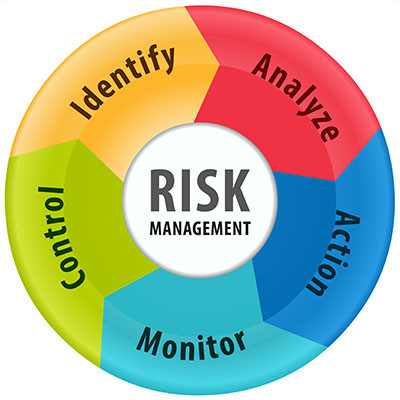For a business, communications take several forms. You have the telephone, instant messaging, email, and other collaboration mediums. On top of that, most businesses have some way to communicate with customers outside of the main options. That’s a lot of communication tools to manage and keep working effectively. This month we thought we would talk a little bit about the benefits of unifying your communications platforms for added benefit.
Apex Technology Blog
What kind of productivity suite does your business use for its day-to-day operations? It doesn’t really matter which industry you classify yourself as or what size your company is; a productivity suite will undoubtedly transform the way your organization operates. Let’s take a look at some of the most common applications found in productivity suites and how they can be powerful catalysts to get work done faster and more efficiently.
We’ve been known to take a bit of an extreme approach to cybersecurity—your business is at constant threat of being attacked by all manners of threats and all that. While we stand by this approach as an effective way to boost awareness and adherence to cybersecurity needs, there are certain attacks that are more likely to target you. This is where risk management comes into play.
The server is the heart and brain of a business’ computing infrastructure. So much so that a failure can cause catastrophic effects on your business. If you are at a point where you are thinking about adding a server to your infrastructure, or replacing one that is a little long in the tooth, you now have less of a dilemma than you may have had previously. This doesn’t mean that it is not a serious decision, but today you have options on how you want to go about deploying your new server. This month, we thought we would go over some of the pros and cons that come with adding new infrastructure and whether purchasing a new server outright is the right decision for your business.
One of the primary ways that modern companies work to boost efficiency is to ease the workloads that their employees have to contend with through automation. Automating certain processes frees up the time these processes would otherwise take to devote to revenue generation. This approach has worked for decades—and today, businesses have access to more automation-focused technology than ever.
Technology spending is an issue that every business has to confront. There are a lot of options out there and a lot of promises made of which many won’t ever come to fruition, so it’s important to know exactly what it is that your business needs before committing to any technology investment. This month, we discuss six variables to consider when deciding on your next technology move.
With so many employees working remotely, it’s important that you do all you can to ensure they have set themselves up for success with their home office. To this end, we have put together a list of suggestions you can use to help your employees build the most comfortable, and productive, home office possible. Here are four tips you can implement for a more comfortable workplace.
Technology is one part of your business where you would rather take proactive measures than react to issues that pop up. After all, preventing some of the disasters and problems which surface could save you so much time and resources. Here are five of the best reasons why you should take a proactive approach to your business’ technology infrastructure.
There are many ways that you can invest in your business. You can hire additional people with a strategy to get more done; you can diversify and try to cultivate different types of revenue; and you revitalize your business through the use of technology. This month, we thought we would discuss how deploying certain technologies can help grow your business fast.
Due to the increasing complexity and rapid growth of the cybersecurity industry, businesses need to stay ahead of developing threats designed to undermine advancements in the latest and greatest security technologies. One way that researchers have used to fight against threats is through the use of artificial intelligence. It’s possible that this emerging technology could be the key to fighting back against cyberattacks.
Maintaining your business’ technology can be a lot to handle, particularly if you don’t have any IT staff members on hand to dedicate to its management. Managed services make this process a lot simpler, ensuring that (amongst other key benefits) your desktop solutions remain up-to-date and prepared for anything. Here are three basic tips to follow to ensure your desktops remain maintained.
Businesses rely on vendors for several things, whether for services rendered or the acquisition of technology. Unfortunately, the act of managing so many vendors can be exhausting and downright time-consuming for companies. What is the forward-thinking company to do, and how can it overcome the challenges of vendor management?
Paper can be incredibly expensive, especially with the quantity that a normal business goes through every single day. However, not only is it expensive on the monetary side, but also on the environmental side as well. By making some changes around your office, you can be more eco-friendly and budget-friendly by reducing the amount of paper waste your organization suffers from.
Being productive is the goal of most people, not only to do a task well in a set time, but to do multiple tasks equally well in the same timeframe. Many experts and consultants have devised strategies meant to boost an employee’s productivity, and a handful of them actually work. This month, we’ll review a few of these strategies so you can give them a try.
Instant messaging is a technology that has picked up substantially in the business world, and for good reason. While email allows for more passive communication, instant messaging allows for more instantaneous communication, similar to a phone call in its urgency. But are you using instant messaging to enhance your work life?
A lot has been made about the Internet of Things (IoT) over the past couple of years. People have been purchasing technology they can control from their phones or from centralized smart hubs and it has resulted in a shift to the way people interact with technology. For modern businesses this can bring several pros and cons to the table. This month we thought we would take a brief look at some of the pros and cons of deploying IoT technology in the workplace.
When you go to such great lengths to protect your business’ network, it can come as quite a shock when you experience a data breach. Surely someone has to be at blame for such an event, right? Unfortunately, this mindset is often one that can come as a detriment to businesses, especially in today’s age of cybersecurity threats and ransomware. It can divide teams and cause rifts that are hard to recover from.
Remote work is more common than ever before, so it’s no surprise that businesses are looking for new ways to ensure remote working arrangements aren’t dragging down operations. Thankfully, because it’s so common nowadays, your organization has a ton of options at its disposal, many of which allow for greater flexibility and mobility.
There are many different varieties of cybercrime that businesses need to be vigilant about. However, most of these varieties can largely be avoided through a few basic practices and behaviors. Here, we’re giving you a few tips to help you prevent attacks from successfully influencing your business, so make sure you share them with your entire team, as well.
In the not-all-that-distant past, connectivity required an actual, physical connection between two endpoints. As a result, a wired connection was the only option for businesses to access online materials and resources. This leaves businesses with a choice to make: is a wired connection better for my operations, or should I implement wireless connectivity?





























